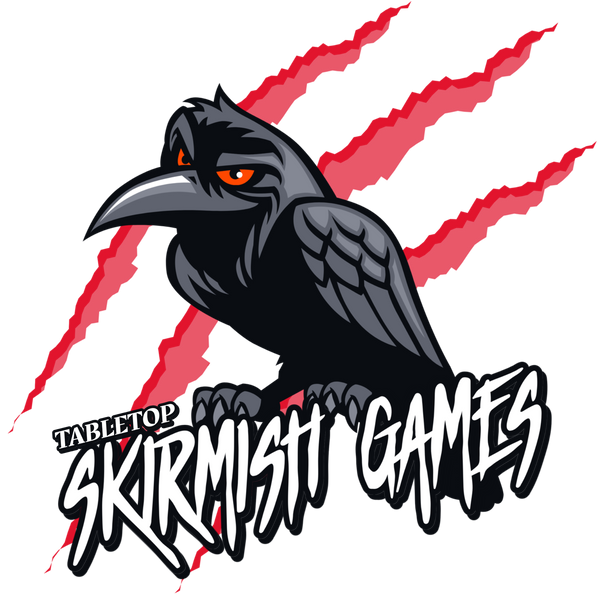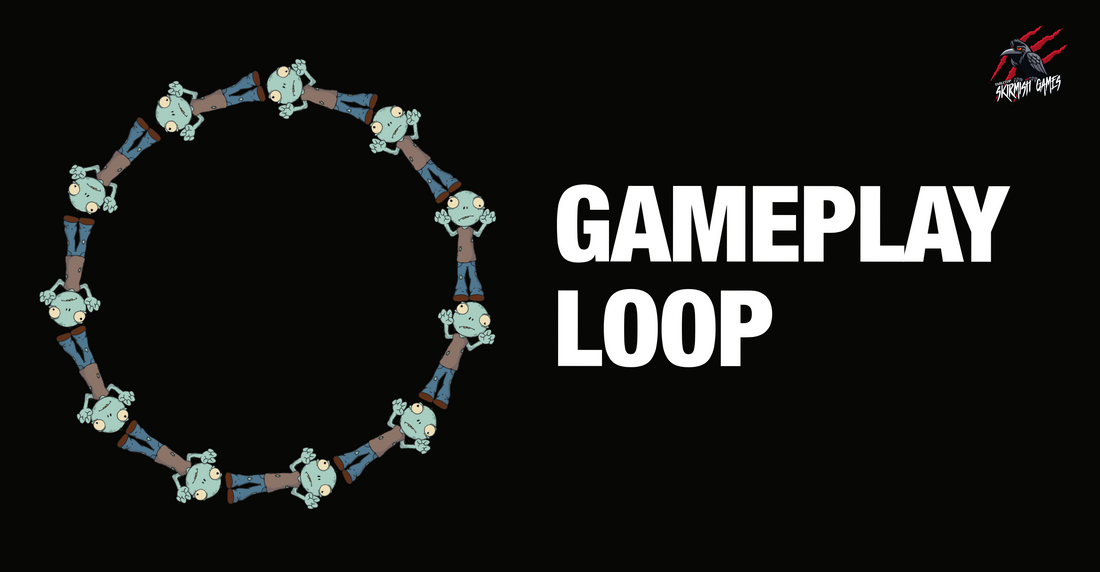Understanding The Gameplay Loop in Skirmish Games
The gameplay loop shapes the cyclical progression and repetition of actions and outcomes in a tabletop skirmish game. In this blog post, we’ll discuss the gameplay loop components, from planning to execution, resolution, and evaluation. We'll look at how it contributes to providing a sense of purpose, meaningful progression, and player agency, ensuring players remain engaged and motivated throughout their gaming experience.
The Gameplay Loop Concept
At the core of every skirmish game lies the gameplay loop—a cycle of actions and outcomes that defines the player's journey. The loop represents a continuous cycle that is made up of planning, execution, resolution, and evaluation. This cyclical nature is not just a mechanic nor is it necessarily written down; it's a process made possible by a good set of core rules. A solid gameplay loop will help shape the rhythm and flow of the game.
Components of the Gameplay Loop
Planning
The first component of the of the gameplay loop begins with planning. Players strategise, contemplate, and visualise their moves, anticipating the dynamic twists and turns of the battle. This phase sets the stage for the action, demanding foresight and tactical decision making.
Execution
With plans in place, players move to the execution phase, where every decision transforms into action on the tabletop. Players move their models and carry out actions like attacking or searching, whilst using special abilities to execute plans and achieve objectives. This execution phase is the embodiment of player agency, as they navigate the complexities of the battlefield, they can change and influence the outcome.
Resolution
As actions unfold, the skirmish reaches its resolution. Combat encounters are decided, objectives are achieved or lost, and the consequences of decisions play out. The resolution phase is where the gameplay loop delivers unpredictability, creating a narrative unique to each skirmish. Players update their character cards or dashboards and record outcomes.
Evaluation
The final phase in the loop is evaluation. Players reflect on the outcomes of their decisions, learning from any successes and setbacks. Perhaps a player discovered an enemy model was more difficult to take out than expected and they'll need to allocate more firepower in the next turn. This phase is crucial as it shapes future planning and execution and keeps the cycle flowing.
When I researched gameplay loops it was fascinating to see how I’d been unknowingly following the cycle in skirmish games I’ve played. It also revealed how much control we have as players to take games in multiple directions.
As game designers it’s our job to set the scene, provide a set of core rules and clear boundaries, and then let the players tell the story through their decisions and actions. The gameplay loop is crucial for this.
Crafting Purpose and Progression
A gameplay loop sounds repetitive but it is actually the opposite. I like to think of it as a wheel rolling forward. Each time a cycle is complete, the wheel has moved further along the path. You could also think about it as a spiral, continuously moving forward as the cycle repeats. With that in mind, the gameplay loop should help to craft purpose and progression, so let’s discuss that now.
Sense of Purpose
A well-designed gameplay loop instills a sense of purpose in players. Every action is a step towards a goal, whether it's taking out an enemy model, completing an objective, or overcoming challenges. This sense of purpose drives engagement, making each decision and outcome inherently meaningful.
Meaningful Progression
Progression is not just about moving forward; it's about evolving with each cycle of the gameplay loop. Skirmish games should offer players a dynamic sense of growth—be it through character development, strategy learning, or unlocking new scenarios. This progression adds layers to the gaming experience, keeping players invested in the evolving narrative.
Player Agency
The gameplay loop, at its essence, empowers players with agency. It allows them to shape the story, influence outcomes, and experience the consequences of their decisions. This agency is a driving force, fostering a deep connection between the player and the game world, ensuring that each skirmish feels uniquely their own.
Maintaining Engagement and Motivation
With the gameplay loop established, we have to keep players engaged and motivated. We can do this with immersive storytelling, something we see woven into the scenarios in the whimsical fantasy game, Moonstone. Challenges, rewards and consequences keep players motivated and as the gameplay loop cycles through it can take the game in different directions which helps to build intrigue and anticipation.
Immersive Storytelling
A compelling narrative, woven seamlessly into the gameplay loop, serves as a magnet for player engagement. Whether through dynamic scenarios, evolving campaigns, or intricate character arcs, storytelling adds an immersive layer that captivates players, urging them to return for more.
Another great example of immersive storytelling in tabletop games is Gates of Niflheim, the viking zombie solo/co-op game that is heavily driven by narrative. You really feel part of the story.
Varied Challenges
To keep players motivated, the gameplay loop should present varied challenges. From scenario-specific objectives to unexpected twists, introducing new elements maintains the element of surprise and ensures that players are consistently challenged, preventing monotony.
In Population Z, I like to use NPCs to add a twist or moral dilemma. Including moral dilemmas in your games is a great way to get players talking and thinking about their actions. We’ve seen moral dilemmas being used a lot in tabletop RPGs but not so much in tabletop skirmish games. I’m changing that!
Reward Systems
Reward systems play a pivotal role in player motivation. Whether through character progression, unlocking new abilities, or earning in-game currency, rewards should be meaningful and aligned with the player's efforts. This not only acknowledges accomplishments but also fuels the desire to explore the next cycle of the gameplay loop.
Characters develop in Population Z by taking part in skirmishes to earn Survivor Tokens. They spend these to level up along skill chains or to buy awesome items from the Merchant. Decisions made throughout the skirmishes can decide how many tokens they receive so in long term planning, the small decisions in the heat of battle make a difference.
Understanding The Gameplay Loop in Skirmish Games
A well-crafted gameplay loop provides players with purpose, meaningful progression, and agency, ensuring that each skirmish is not just a battle but an exciting chapter in a larger narrative.
I hope you found this blog post helpful and now can see how the gameplay loop can be used in your own games as you set up mechanics for players to carry out the cycle of planning, execution, resolution, and evaluation.
I’d love to hear your thoughts and opinions on the subject, so join in the conversation in the comments below.
Thanks for reading!
Lee
Look out for my new game, Population Z: Welcome to Huntsville, launching in January 2024.

